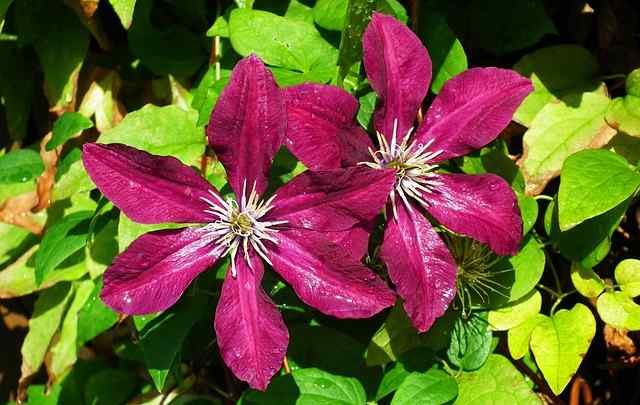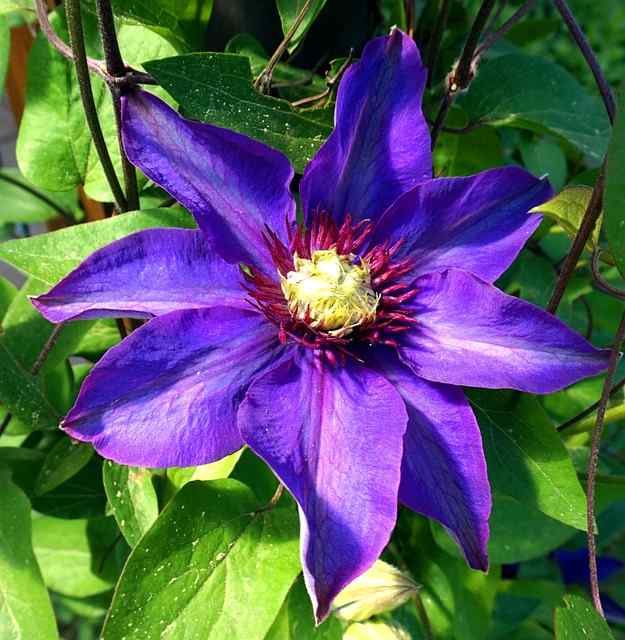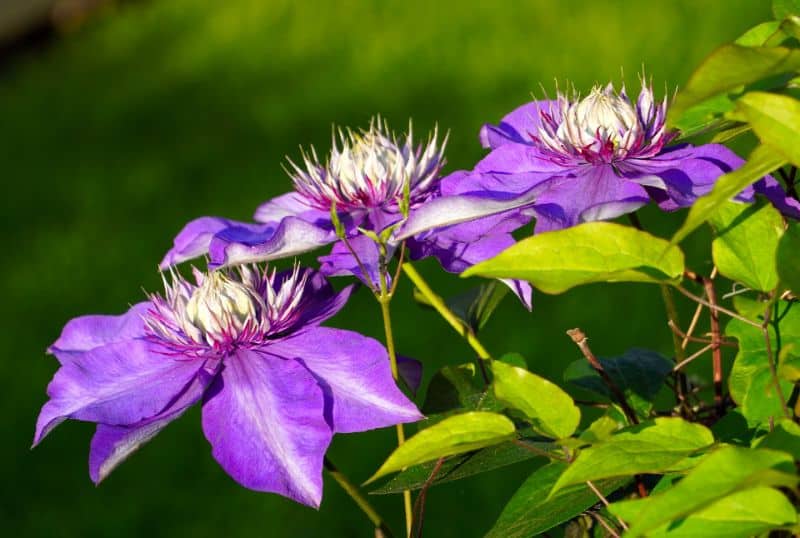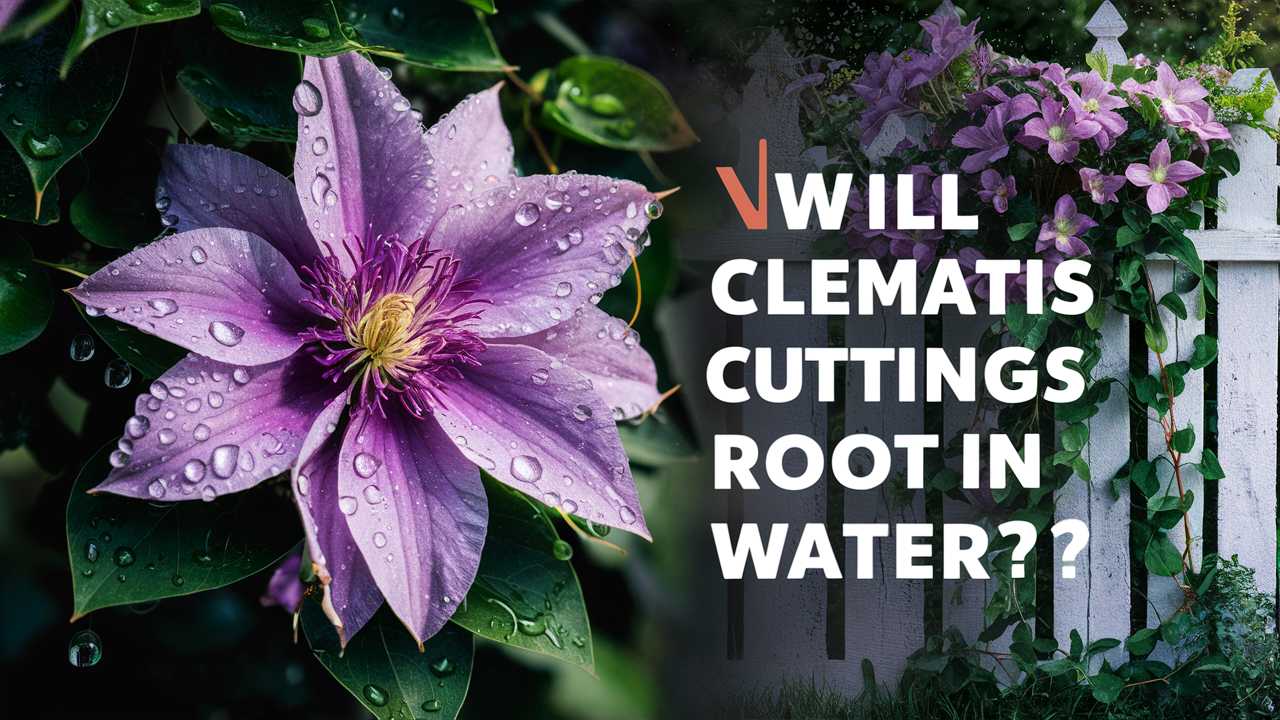Will clematis cuttings root in water? This article provides an in-depth exploration of this topic, covering the methods of propagating clematis, comparing water rooting to other methods, tips for success, and key factors to consider.
How Clematis Propagation Works

Propagating clematis can be done in several ways: through seeds, division, layering, and taking cuttings. Each method has its pros and cons, but cuttings are among the most popular because they are often quicker and provide a reliable clone of the parent plant. The key focus here is on stem cuttings, particularly when considering rooting in water.
Why Consider Water Rooting?
Rooting clematis cuttings in water is an attractive method for several reasons:
Visual Progress: Watching the roots develop in water can be gratifying, allowing you to see the stages of growth.
Simple Setup: This method often requires minimal materials—a glass of water and the cutting itself.
Nature of Clematis: Clematis stems have a tendency to root effectively, making water an appealing option for propagation.
Are There Benefits to Rooting in Water?

Rooting clematis cuttings in water offers unique advantages:
Immediate Hydration: Water provides instant hydration, which can be beneficial for the cutting as it begins to develop roots.
Avoiding Soil Complications: Soil can harbor pathogens. Rooting in water eliminates this risk and can lead to healthier roots.
Ease of Observation: You can easily monitor the cutting’s progress and detect any issues early, such as rot or insufficient growth.
The Process of Taking Clematis Cuttings

Timing is Key
The best time to take clematis cuttings is during mid-spring to early summer when the plant is actively growing. This ensures that the cuttings are taken from healthy, vigorous growth.
Selecting the Right Cuttings
Choose semi-hardwood cuttings. Look for stems that are neither too young and supple nor too old and woody. The ideal cutting is approximately 4 to 6 inches long and contains at least two nodes.
Preparing the Cuttings
Make a Clean Cut: Use a sharp, sterilized blade to make a clean cut just below a node. This is where the roots will form.
Remove Lower Leaves: Trim the leaves on the lower half of the cutting to prevent them from rotting in the water, but leave the top leaves intact to allow photosynthesis.
Will Cutting Clematis in Water Work?

While many gardeners have had success rooting clematis cuttings in water, results can be variable. The process largely depends on the conditions and the care provided afterward.
The Water Technique
Place the Cuttings: Submerge the prepared cuttings in a glass of clean water, ensuring that only the nodes are submerged while the leaves remain above the water surface.
Choosing the Right Container: A clear glass container can be beneficial, allowing you to monitor root development and water clarity.
Light Conditions: Place the container in a location that receives bright, indirect sunlight. Direct sunlight can overheat the water and harm the cuttings.
Maintenance and Care
Change the Water Regularly: To prevent stagnation and algae growth, change the water every few days.
Monitor Growth: After a few weeks, observe for signs of root development. Healthy roots will be white and firm.
Common Issues When Rooting in Water
While rooting clematis cuttings in water can be rewarding, there are potential pitfalls:
Rotting: If the cuttings remain too long in stagnant water without proper care, they might rot. Always check the cutting for mushiness or discoloration.
Algae Growth: Dark containers or water that’s too warm can lead to algae, which competes for nutrients and may harm the cutting. Regularly changing the water can mitigate this.
Alternative Methods of Rooting Clematis Cuttings

While rooting in water can be effective, there are alternative methods that some gardeners prefer. Here’s a brief overview of several common techniques:
Soil Propagation
Use a Propagation Mix: A well-draining mix of perlite and peat is excellent for rooting clematis cuttings in soil. This helps retain moisture while ensuring proper drainage.
Create a Humid Environment: Cover the pots with plastic bags or a humidity dome to maintain moisture levels, but remember to ventilate occasionally to prevent mold.
Air Layering
Air layering involves leaving a section of the stem attached to the parent plant while encouraging root growth at the node. This method can result in well-established plants faster but does require more skill and patience.
Division
For mature plants, division is another propagation method. It’s particularly effective in the spring or fall when plants are not in bloom. Gently separate the roots, ensuring each division has a healthy root system.
When to Transplant Your Rooted Cuttings

Once rooted, clematis cuttings can be transplanted into the garden or larger containers. Here are some signs that your cuttings are ready:
Root Length: Roots should ideally be at least 2 to 3 inches long and firm.
Potting: If using soil, pot the rooted cuttings in individual containers filled with a quality potting mix.
Hardening Off: Before fully planting them outside, harden off the cuttings by gradually introducing them to outdoor conditions for about a week.
Best Practices for Success

Maximizing the chances of success when propagating clematis from cuttings involves some best practices:
Be Patient: Root development can take time, often several weeks depending on environmental conditions and variety.
Keep Records: Note the dates of cutting, rooting, and transplanting to better understand the process and improve future attempts.
Stay Organized: If propagating multiple varieties, label your cuttings. This will help you remember care requirements and varieties.
The Benefits of Clematis in Your Garden
Aside from the excitement of propagation, clematis offers numerous benefits once established in your garden:
Aesthetic Appeal: Clematis offers a variety of blooms that can brighten up any area.
Biodiversity: They attract pollinators like bees and butterflies, contributing to local ecosystems.
Vertical Gardening: Clematis are excellent for maximizing small spaces. Their climbing nature makes them perfect for small gardens, terraces, or patios.
Conclusion: Will Clematis Cuttings Root in Water?
In conclusion, clematis cuttings can indeed root in water, making it a viable method for propagation. While there are factors to consider and potential challenges, the process can be both rewarding and enjoyable.





